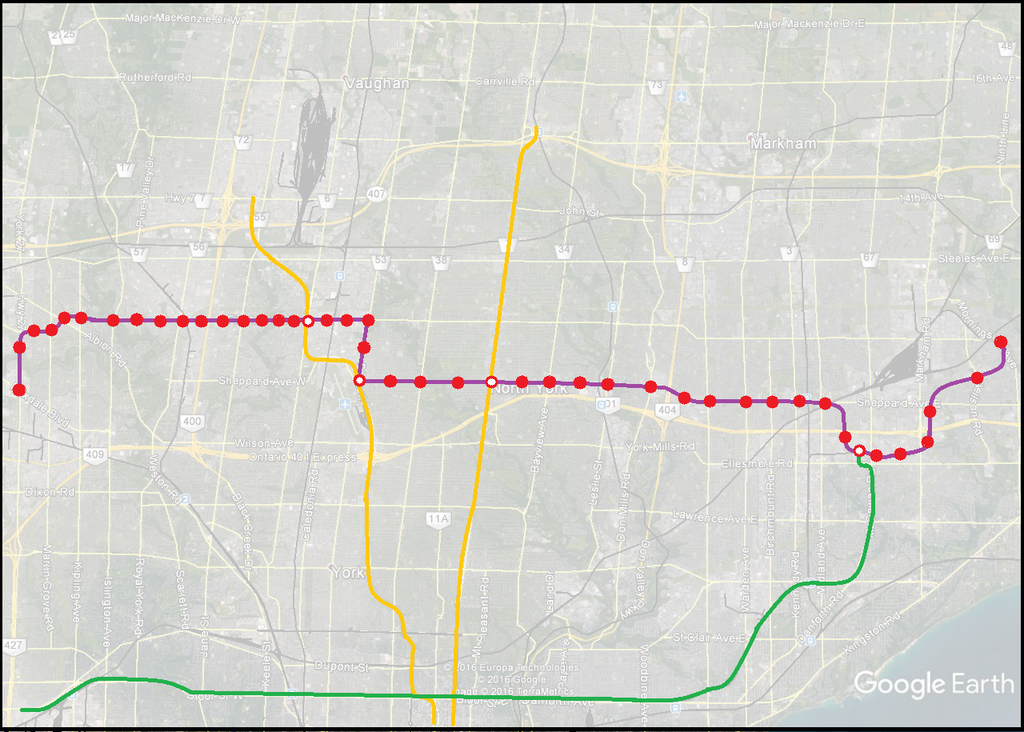For reference, here is a map of what I'm talking about:
Blue: At grade
Brown: Underground
Orange: Elevated
The section between Keele and Yonge would have a limited number of traffic lights, which is why I think it's fine being at grade though that section. Notice that is uses West Donland Park to connect Finch West to Sheppard West. Between Yonge and Don Mills, the Sheppard Subway is converted to underground LRT. Then East of Don Mills the line is elevated to Scarborough Centre, because there are a lot of traffic lights between Don Mills and McCowan. East of Scarborough Centre to Malvern, it's at grade using the Transit City right-of-way.
The big negative here is the conversion of the Sheppard Subway to underground LRT. Would cost around $700 Million and necessitate a shutdown for a period of time. But users of the line would be getting enormously improved connectivity, that I think that the shutdown would be well worth it.
The Sheppard Subway proposal had peak ridership of around 7,000 pphpd. It's difficult to justify paying the price of an underground subway extension with that ridership, but I think the cheaper elevated eastward extension could be justified. This section east of Don Mills would have higher peak ridership than the Eglinton Crosstown, if those projections are accurate.
The section west of Yonge would link the FWLRT with the Yonge line, letting those commuters have a transfer-free ride to Yonge.







